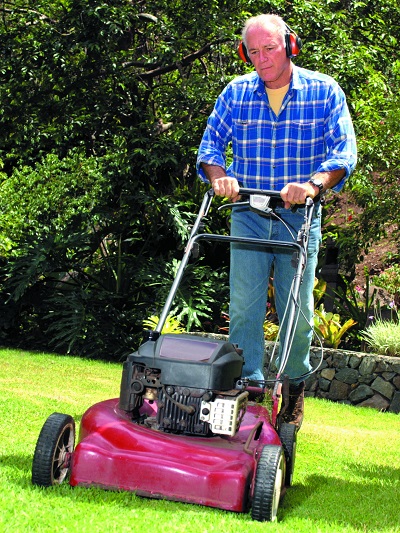
All you should need to maintain a healthy lawn is a sprayer and a mulching lawn mower. In a perfect world this is true. If you live in a temperate climate, seed your grass in good soil and have an abundance of good water, you should have a healthy luxurious lawn that can be maintained with compost tea and a mulching lawn mower.
So, what if you inherited a lawn lacking some of these desirable traits? Assuming, that you have a species of grass that is appropriate to your climate, what is left is the condition of the soil and the water that is needed to keep the grass green. These two can be related since biologically active soil retains moisture.
You will notice that I used the term “biologically active.” To have soil that is biologically active you must have three things: First you need to have some microbial life, and then you need a friendly place for the microbes to live as well as the food and water to sustain them.
The place for your microbes to live is the first order. If your grass is struggling to breathe you may want to aerate the turf. The next step is to begin building the soil from the top down – sometimes called top dressing. In this process, you apply everything your lawn will need to become biologically active and thrive. This cannot be done all at once, it must be done a little at a time.
To figure out how much area you need to treat, measure the length and width of the surface in feet and multiply the length times the width to get square feet. If your lawn is broken up into multiple plots, measure each plot for length and width, calculate the square feet and add the square footage of all the plots for total square footage. The most common unit of surface in residential horticulture is 1000 square feet. So, my recommendations will be for multiples of 1000 square feet.
The materials required come in two forms, dry and wet:
• Dry = peat moss, lime, and Azomite rock dust.
• Wet = compost tea, water, and fertilizer.
The fertilizer is used to encourage the microbes to turn the peat moss into an earthy absorbent material. Apply the dry materials with a spreader and use a watering can or sprayer for the wet materials.
Recipe for treating 1000 square feet of lawn:
• 2 bales of peat moss
• 10 pounds of lime
• 1 pound of Azomite
Break open the peat bales on a tarp or cleanable hard surface. Sprinkle the lime and Azomite over the peat and mix with a garden fork. Estimate the boundaries of a 1000-foot patch and apply the dry mix with a spreader. After applying all the dry materials mix:
• 2 gallons of compost tea
• 4 gallons water
• 4 gallons of fish fertilizer (or substitute with 8 gallons of water and 10 tablespoons of
Miracle Grow or other plant food)
Apply with a watering can or a sprayer. You may need to add additional water as the dry mixture should be saturated and the peat moss is very absorbent. Depending on the condition of your grass you may need to retreat your lawn monthly until the root structure improves. The best time to start is during cool weather so less water is required, and less mowing is necessary, which cuts down on the creation of dust.
Eventually all you will need is a sprayer and a mulching lawn mower. Use the sprayer to apply compost tea and the mulching lawn mower to create nitrogen rich grass clippings that will feed all the critters from the microbes to the earth worms.
Jerry Erickson is the founder of SoilSoup. You can visit their website at SoilSoup.com.
Related Articles & Free Email Newsletter
Bacteria are Great for Compost Tea




Comment here